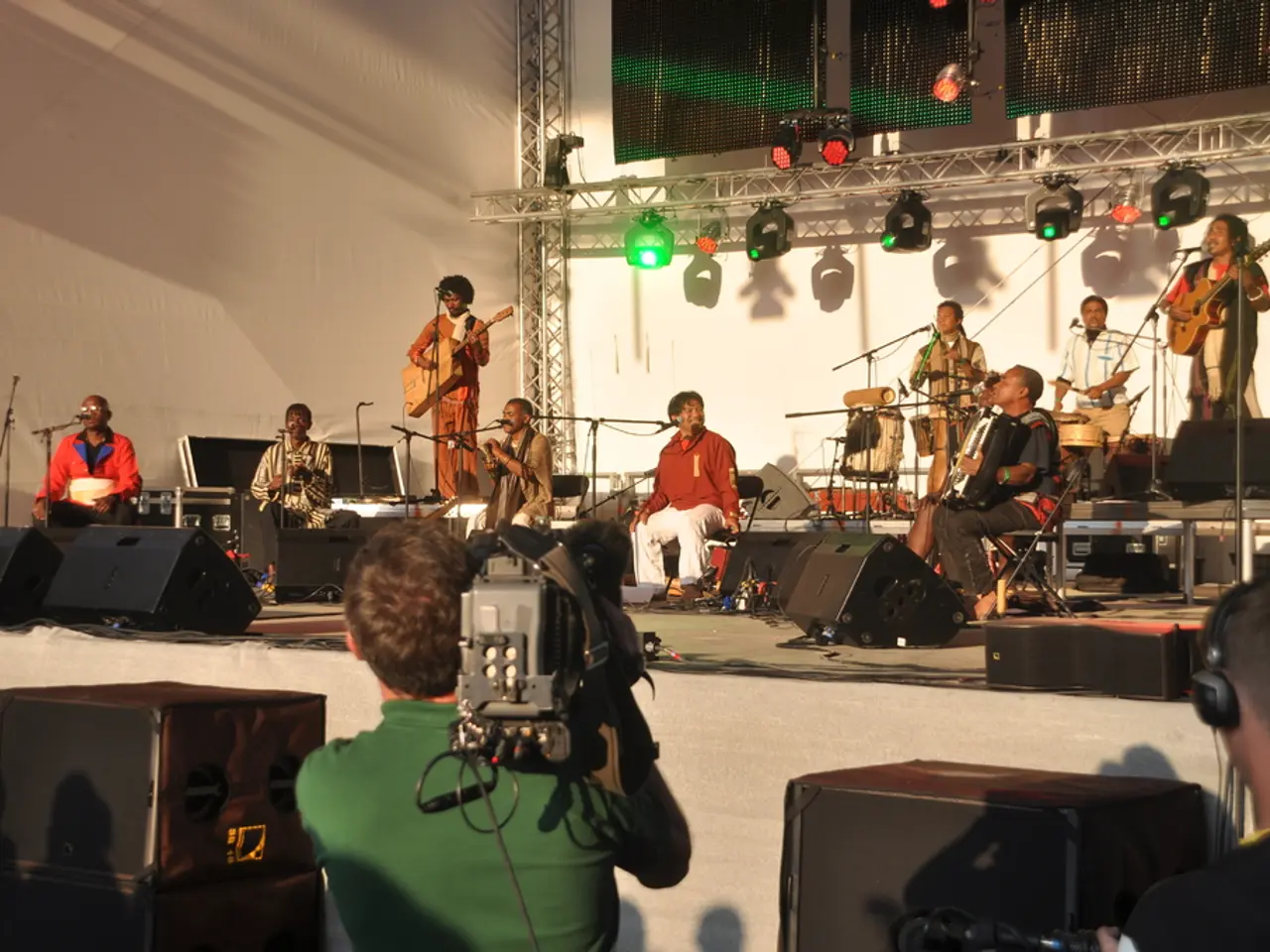Beatles' Historic Stadium Performance: Behind the Scenes of the Initial Stadium Recording
The Beatles' historic performance at William A. Shea Stadium in Queens, NY on August 15, 1965, marked the beginning of true stadium rock concerts with a record crowd of 55,600. However, the audio record of this momentous event is infamous for its unsatisfactory live mixing conditions that necessitated significant studio overdubbing afterward.
The stadium's PA system was a single, loud setup meant to reach the large crowd but did not provide good foldback (monitoring) for the band. The microphones on stage were wired into a system that fed the PA and possibly isolated feeds for recording, but the original recording suffered from noise and imbalance.
The raw tapes reveal Track 1 of the tape contains the mix of the three vocal mics, which are also picking up some guitar/bass amp. Track 2 contains just the guitar and bass amp mics, along with the E-V 666 drum mic. The guitars were heavily overmodulated and distorted throughout the recording, and the vocal mix played solely through an array of Electro-Voice LR4 column speakers splayed about the field toward fans.
Bob Fine, a respected audio professional, was sought for help by Clay Adams to improve the audio quality of the Beatles' Shea Stadium concert recordings. Fine, who had a strong reputation in the audio world, having worked on various classical, pop, and jazz recordings, as well as developing the 7-track sound system for Cinerama, took three passes at the mix, the first on October 28, after transferring the 2-track recordings to full-coat 35mm mag tape.
However, much of the recorded audio for film and broadcast was highly post-processed and overdubbed in studio, not a pure live mix from Shea Stadium. Giles Martin and engineer Sam Okell, in their restoration work, opted to base their work as much as possible on the original raw Shea recordings made by Fred Bosch, rather than the final broadcast mix featuring the CTS overdubs and Hollywood Bowl material.
The concert was the opening of their second U.S. tour, which ran for a little over two weeks, visiting ten different cities. The finished film was broadcast first in Britain by the BBC a few months later, on March 1, but not until January 1, 1967, in the U.S. by ABC. The film was shot with a dozen strategically placed 35mm cameras.
Despite the audio challenges, the Shea Stadium concert remains a significant milestone in The Beatles' career, marking the transition from smaller venues to the grandeur of stadium concerts. The raw recordings, though flawed, offer a unique insight into the energy and excitement of that historic performance.
- Bob Fine, with his renowned expertise in audio, was enlisted to enhance the audio quality of The Beatles' performance at Shea Stadium.
- Fine, who had worked on various genres including classical, pop, jazz, and sci-fi-and-fantasy records, attempted to improve the mix three times, the first on October 28.
- The studio overdubbing and post-production were extensive, as much of the recorded audio for the film and broadcast was processed after the original performance.
- Although the audio for the Shea Stadium concert had challenges, it was a significant milestone in The Beatles' career, marking their shift from smaller venues to stadium concerts.
- The historic performance was captured on multiple tracks, with each track containing different sound sources such as headphones, microphones, speakers, and console feeds.
- The music and entertainment industry, influenced by pop-culture, was impacted by the growth of stadium rock concerts following The Beatles' Shea Stadium performance.
- The entertainment industry experienced a revolution, with artists adopting innovative audio technologies such as headphones and advanced mixing consoles, leading to an altogether new experience for the audience.






